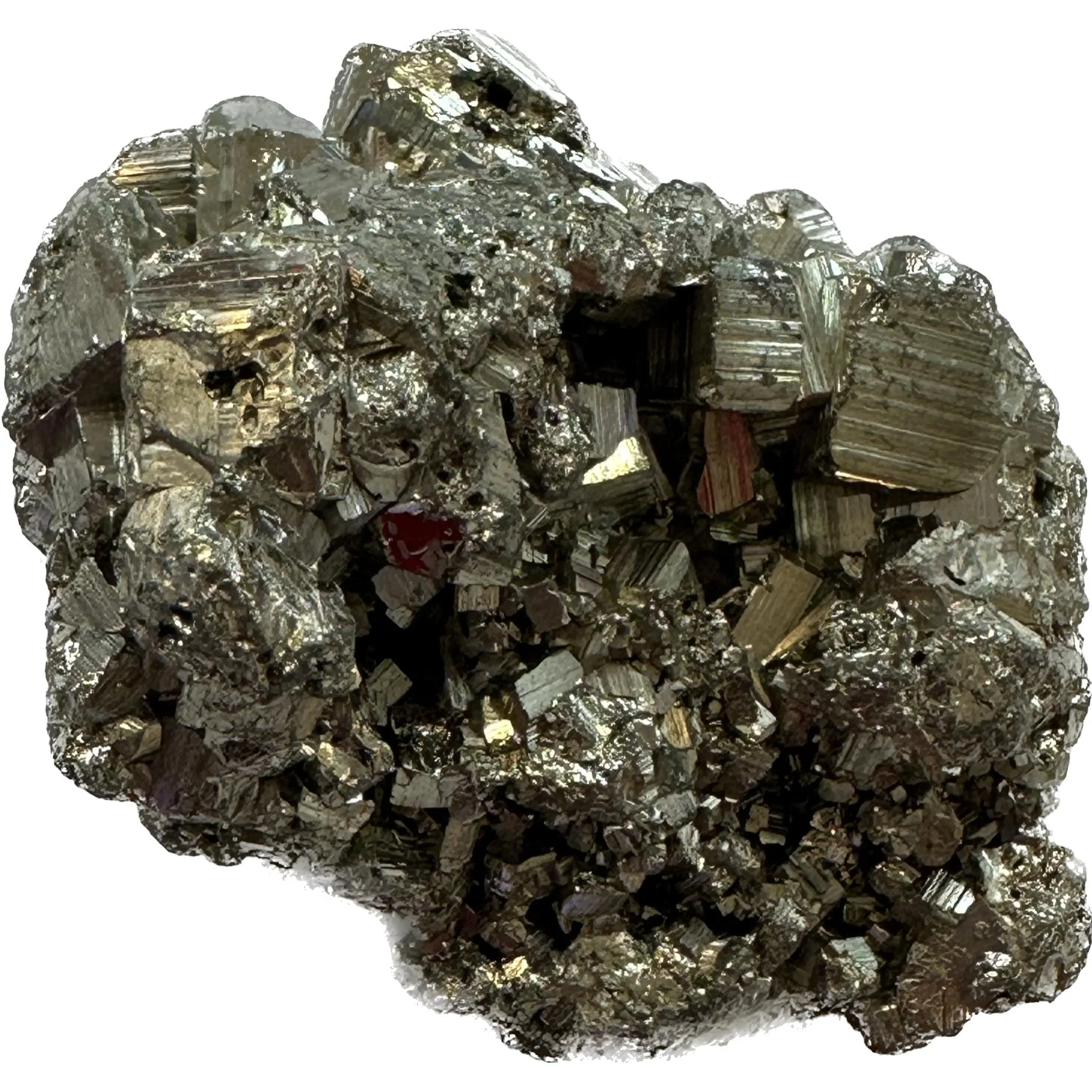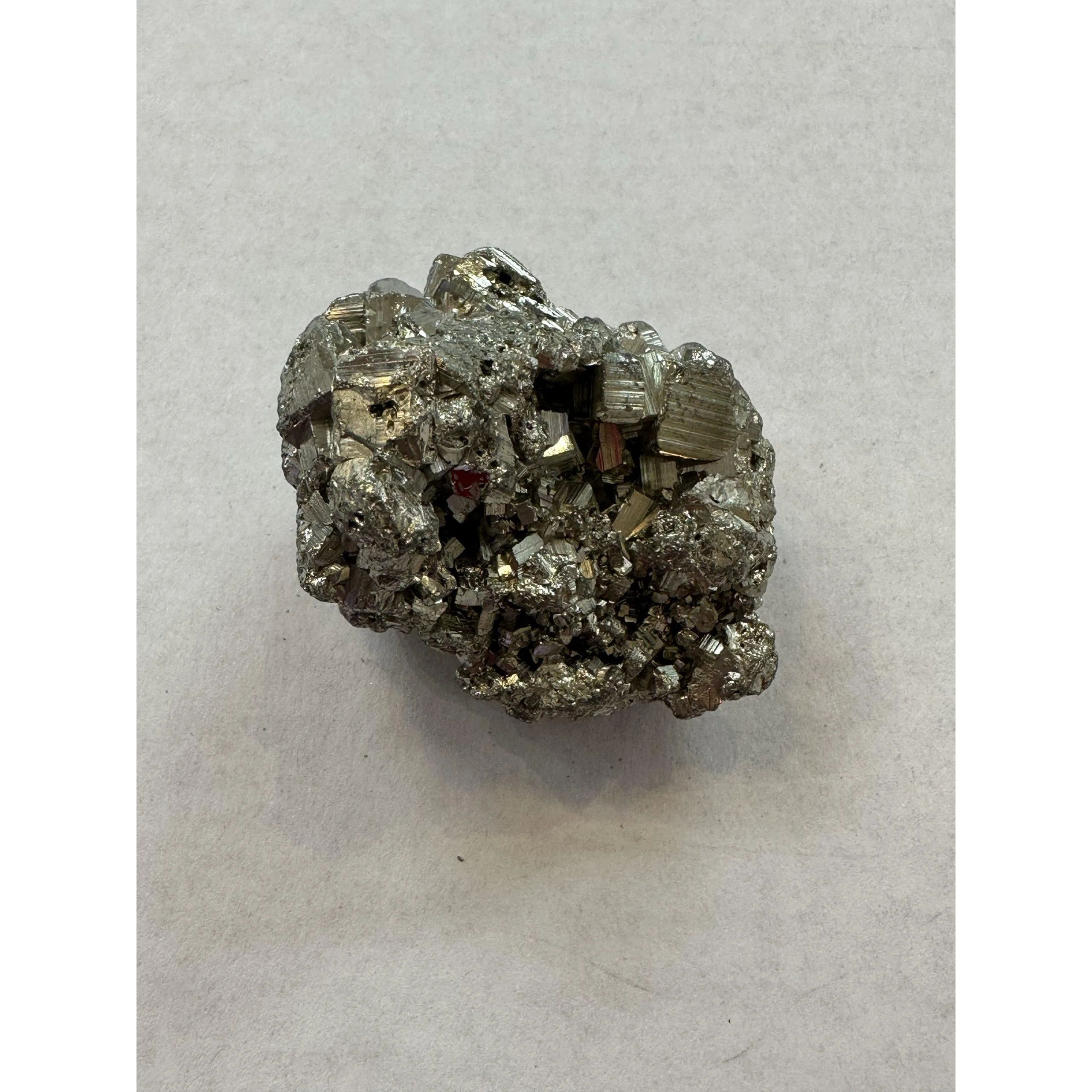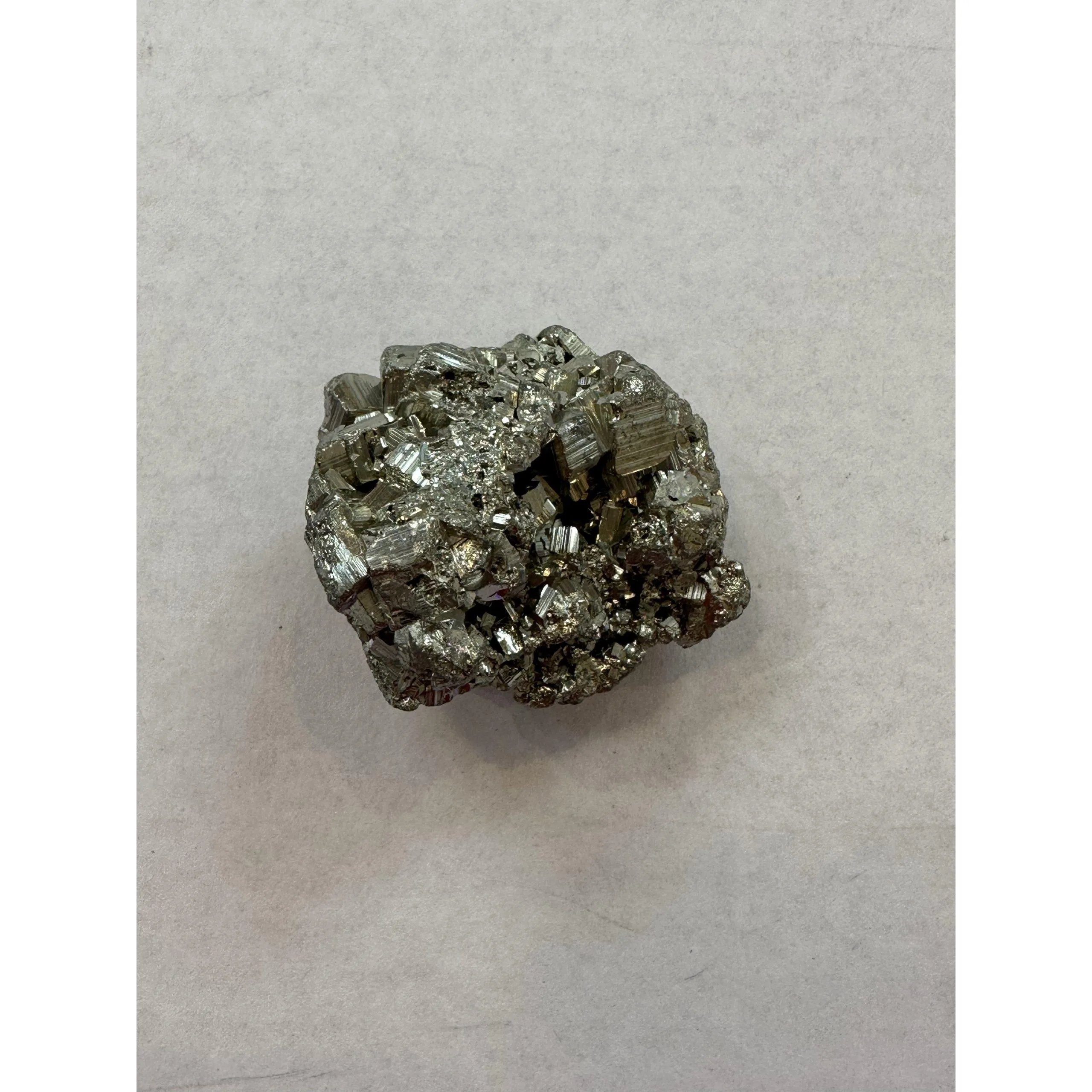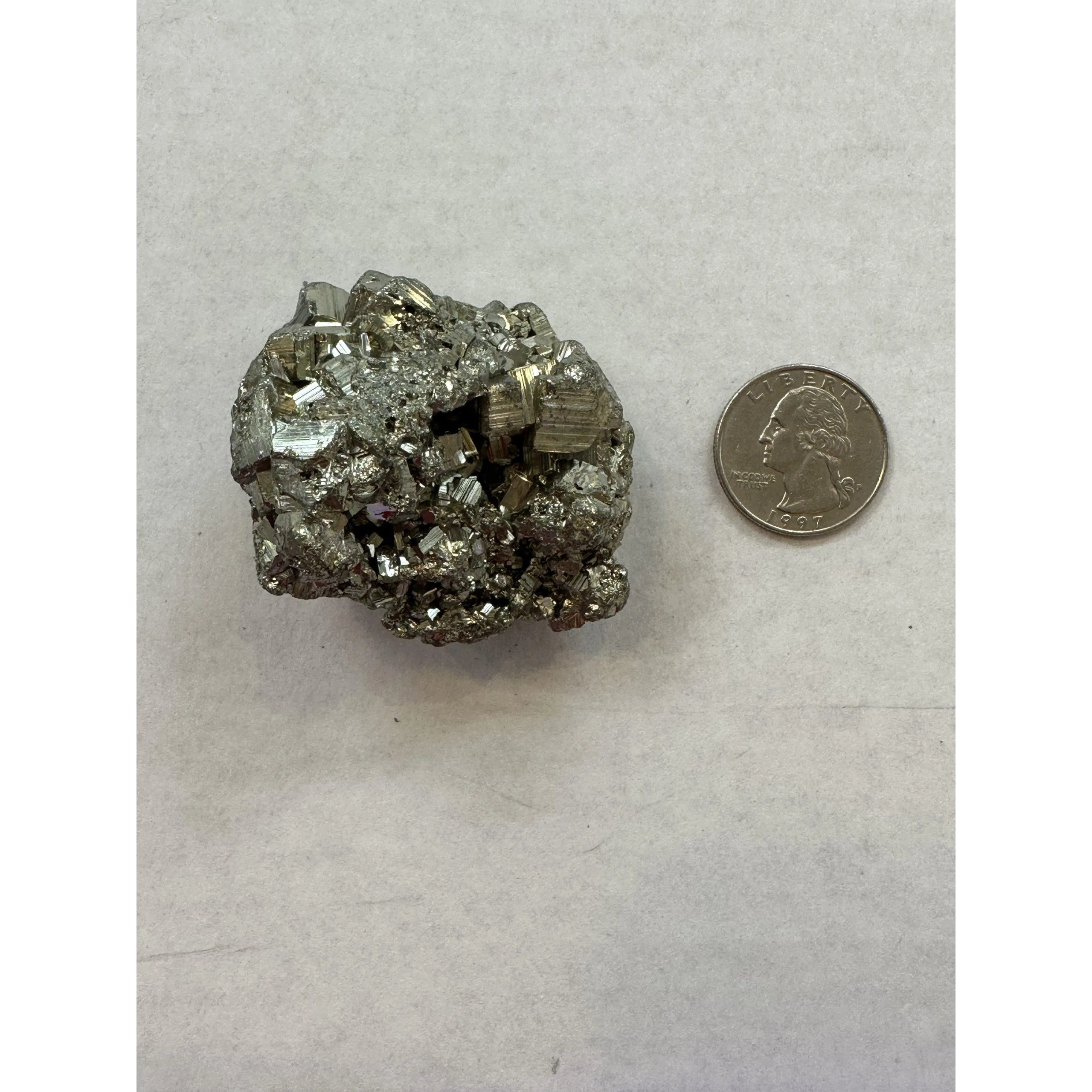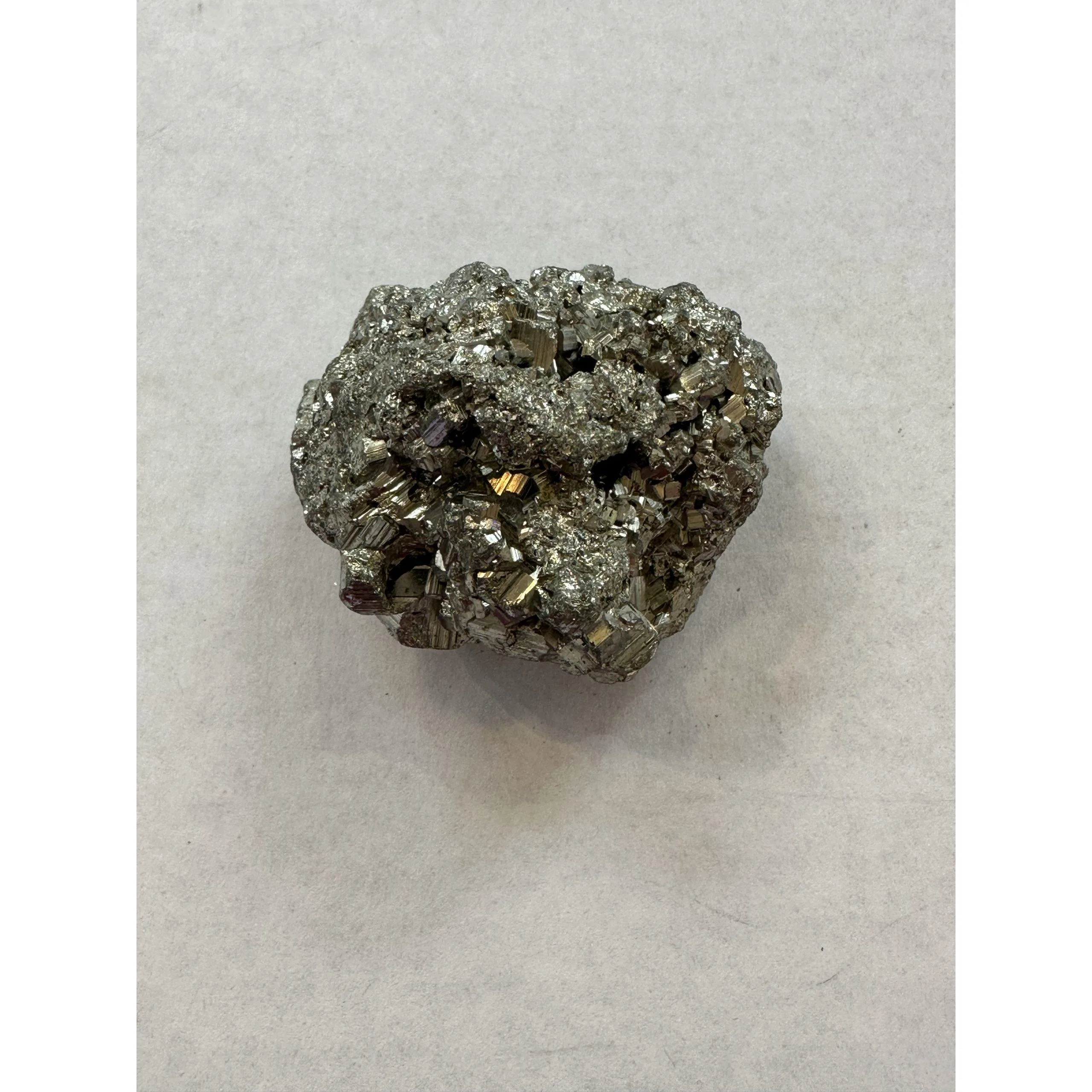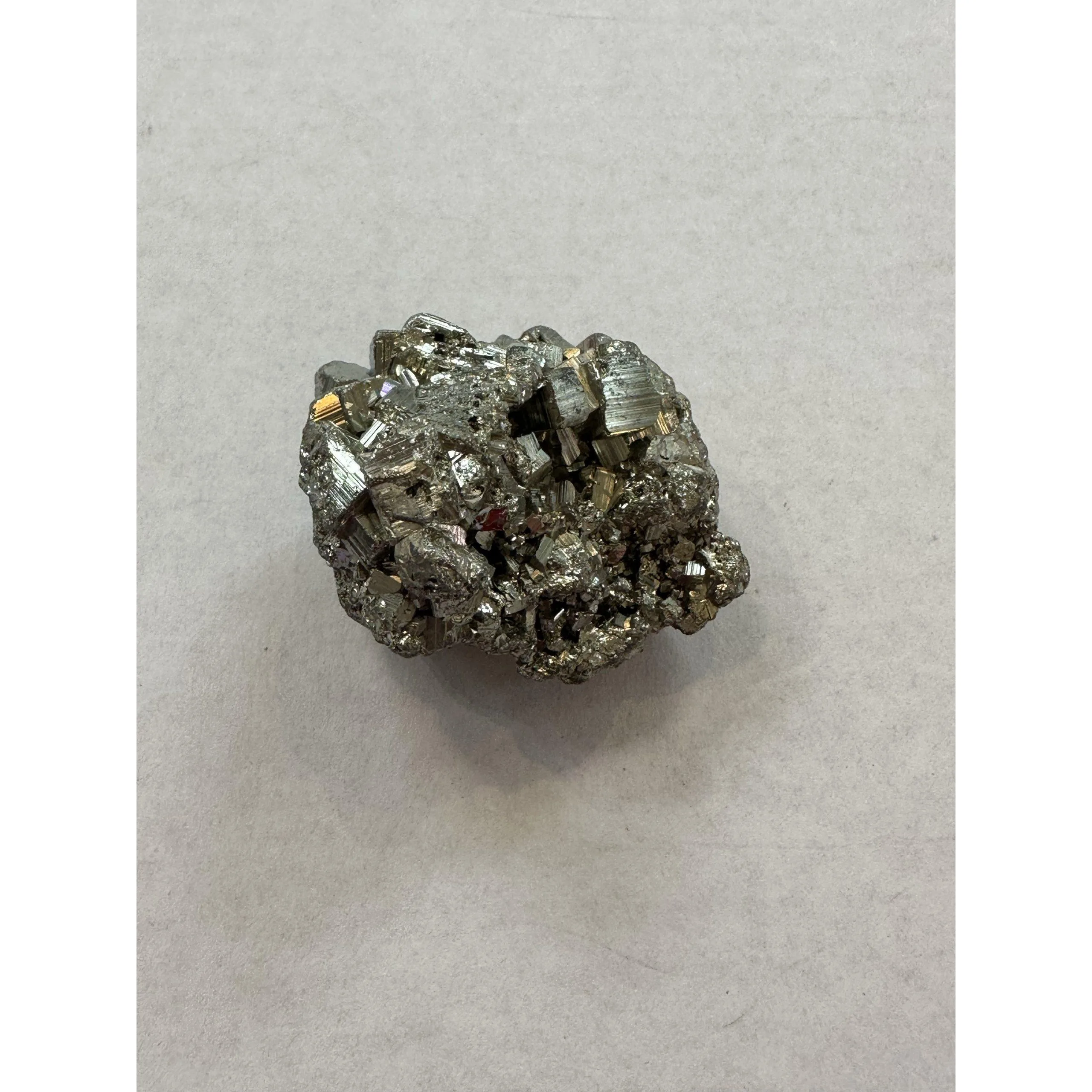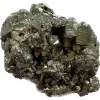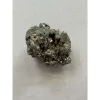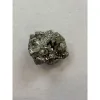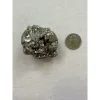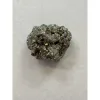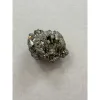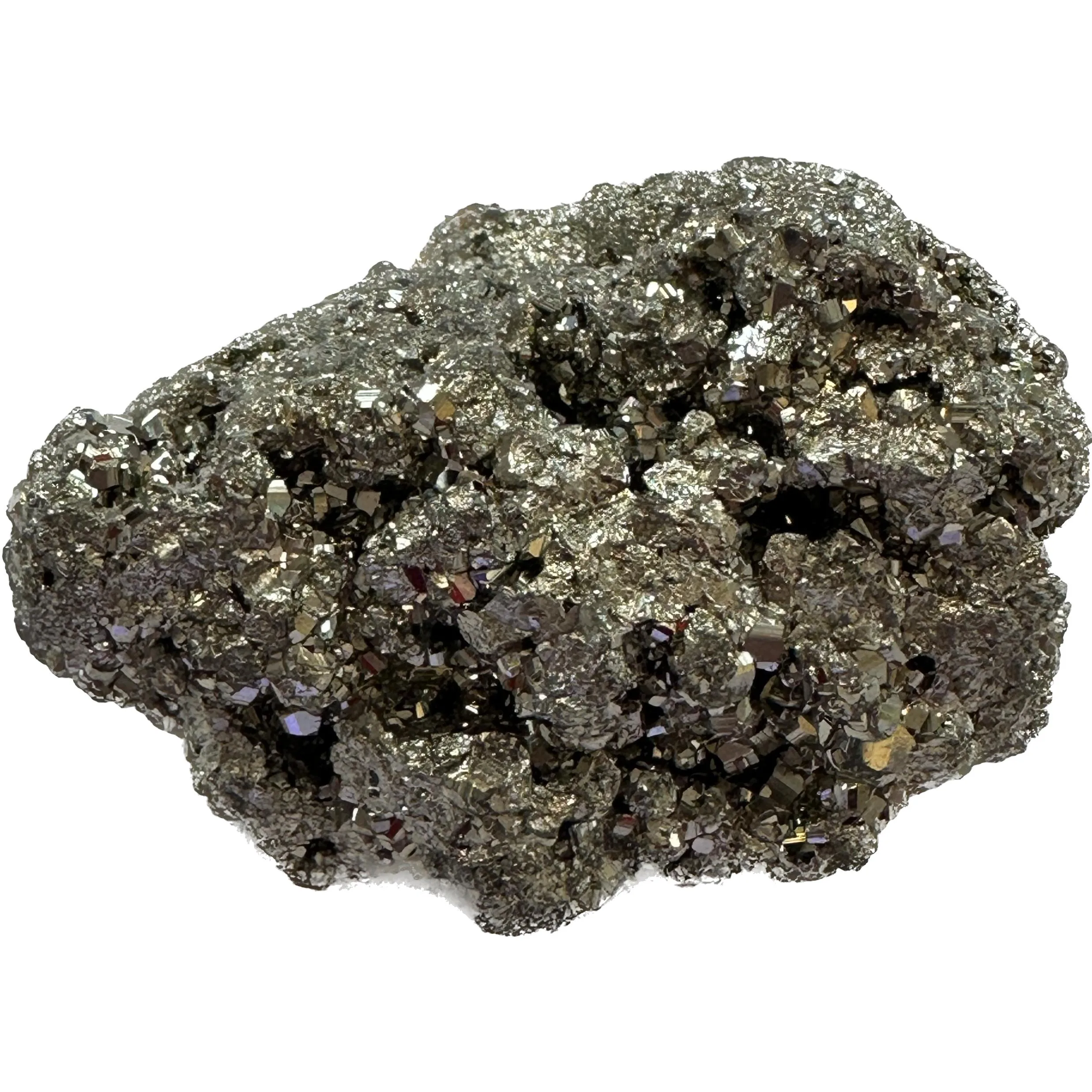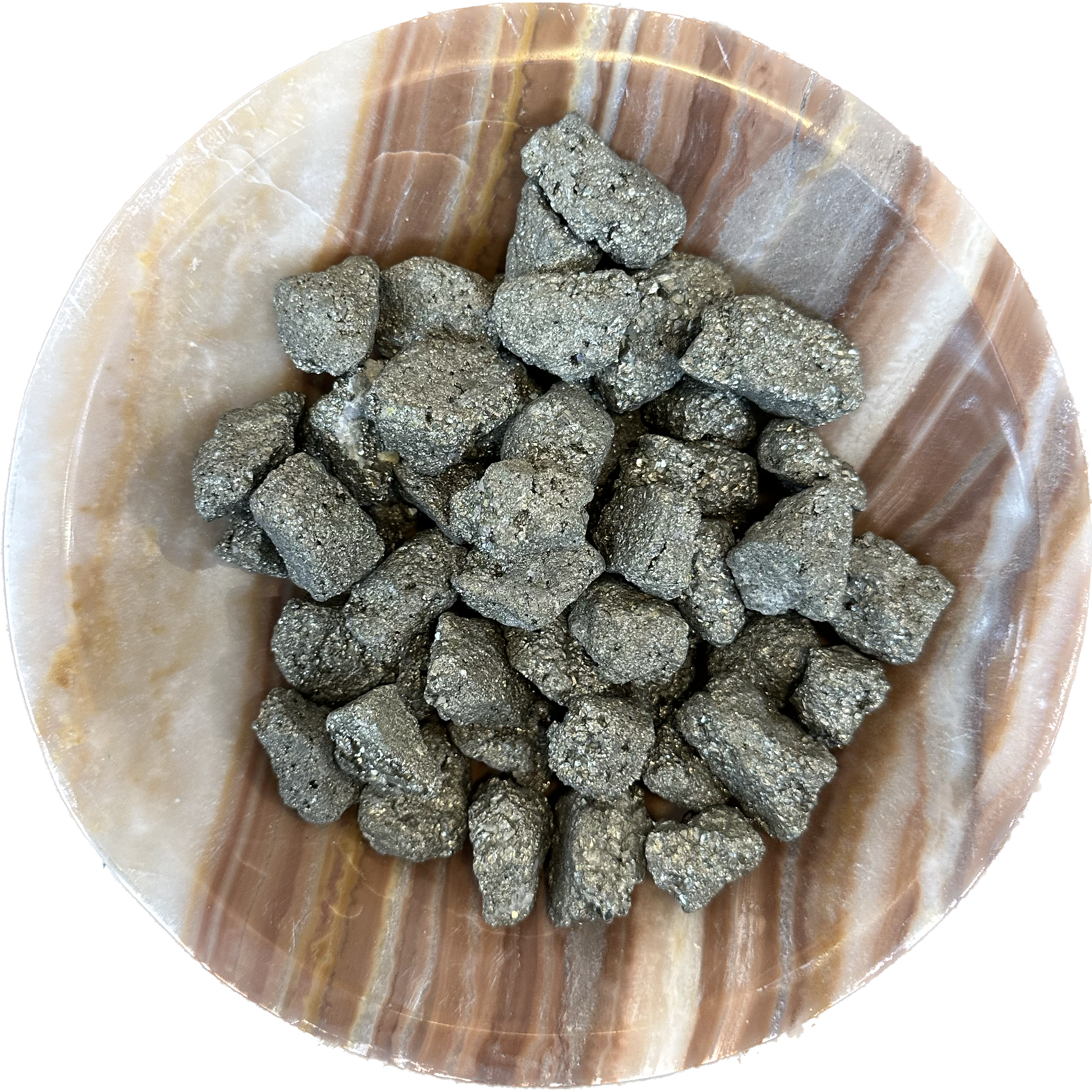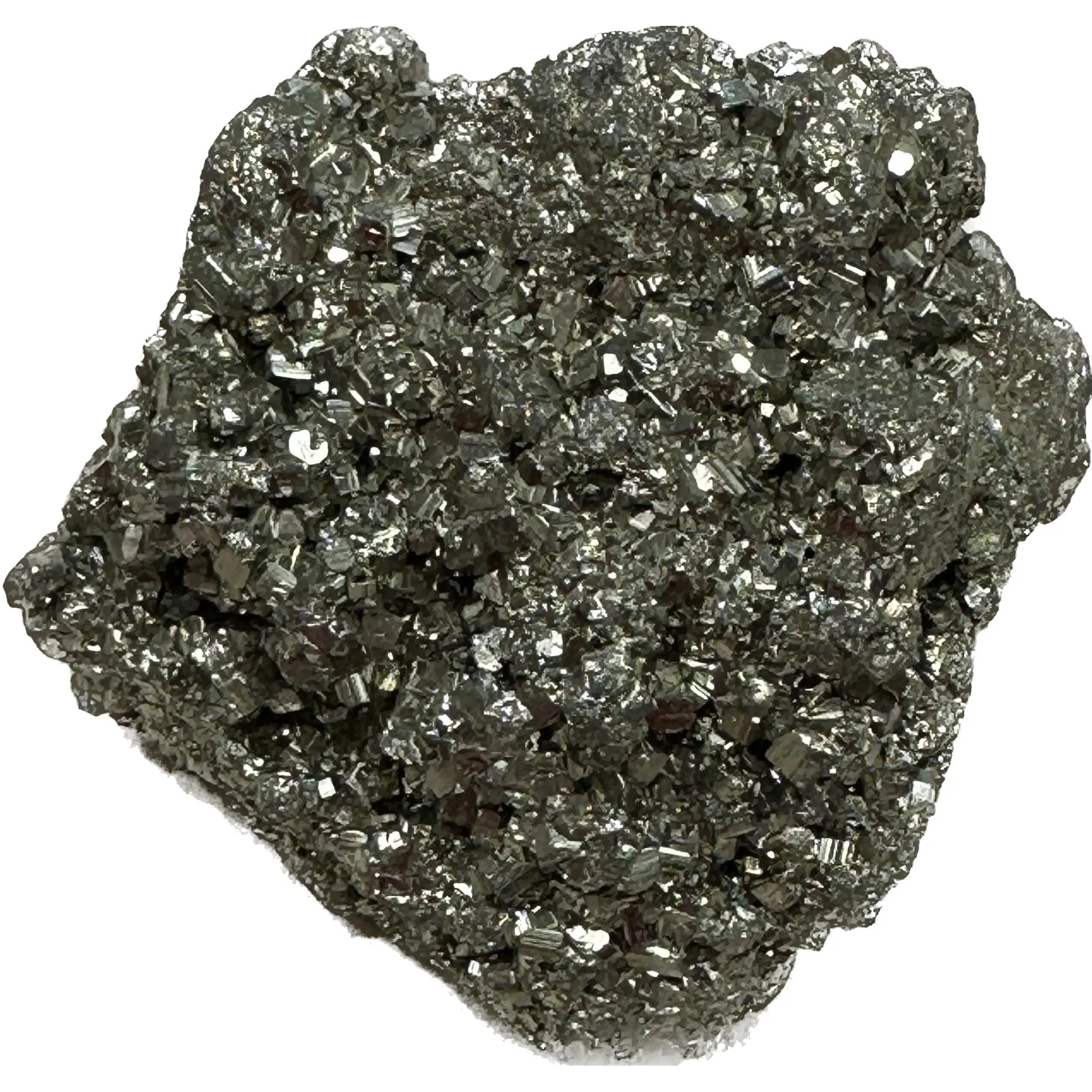Pyrite, often referred to as “fool’s gold,” is a mineral with the chemical formula FeS2, consisting of iron (Fe) and sulfur (S). Its name is derived from the Greek word “pyr,” meaning “fire,” due to its ability to produce sparks when struck against metal or another hard surface. Pyrite has been known to humanity for thousands of years and has played various roles throughout history, from being used as a decorative stone to being recognized as a valuable ore for the production of sulfur and sulfuric acid.
Pyrite typically forms in sedimentary, metamorphic, and igneous rock formations. It occurs in a variety of geological environments, including coal seams, hydrothermal veins, and sedimentary rocks such as shale and limestone. Its formation is often associated with the presence of organic matter, which provides sulfur for its composition.
One of the most distinctive characteristics of pyrite is its metallic luster, which gives it a brassy-yellow appearance that closely resembles gold. This resemblance is why it earned the nickname “fool’s gold” since novice prospectors often mistook it for the real thing. However, unlike gold, pyrite is much harder and more brittle. It has a hardness of about 6 to 6.5 on the Mohs scale, whereas gold is much softer, with a hardness of only 2.5 to 3..
In addition to its metallic luster, pyrite often forms cubic, octahedral, or pyritohedral crystals, though it can also occur in massive and granular forms. Its crystal structure is characterized by an arrangement of iron and sulfur atoms in a cubic lattice pattern. This arrangement contributes to its unique physical properties, including its conductivity and ability to generate sparks.
Pyrite’s conductivity, particularly its ability to conduct electricity, has led to its use in various technological applications. It is utilized in the manufacturing of batteries, electronic components, and as a semiconductor material in certain types of solar cells. Its conductivity arises from the presence of iron atoms within its crystal lattice, which can easily transfer electrons, making it useful in electrical devices.
Historically, pyrite has been valued for its sulfur content. When heated, pyrite undergoes a chemical reaction known as roasting, which releases sulfur dioxide gas. This process has been used since ancient times to extract sulfur for various industrial purposes, including the production of sulfuric acid, one of the most widely used industrial chemicals.

During the Industrial Revolution, pyrite became a significant source of sulfur for the burgeoning chemical industry. Large-scale mining operations were established to extract pyrite-rich ores, particularly in regions with abundant coal deposits, where pyrite commonly occurs alongside coal seams. The sulfuric acid produced from pyrite played a crucial role in various industrial processes, including metal smelting, fertilizer production, and the manufacture of chemicals, dyes, and explosives.
However, despite its industrial importance, pyrite has also posed environmental challenges. When exposed to air and water, pyrite undergoes a chemical reaction known as “pyrite oxidation,” which produces sulfuric acid and iron hydroxide. This process, often referred to as “acid mine drainage,” can result in the contamination of soil and water with acidic runoff, leading to environmental damage and the degradation of ecosystems.
In addition to its industrial and environmental significance, pyrite has also been prized for its ornamental qualities. Its distinctive appearance and metallic luster make it a popular choice for jewelry, decorative objects, and mineral collections. Pyrite specimens are often polished or cut into cabochons for use in jewelry, where they are sometimes referred to as “Apache gold” or “Spanish gold.”
In folklore and metaphysical beliefs, pyrite is associated with various properties and meanings. It is believed to possess protective energies, shielding the wearer from negative influences and promoting vitality and confidence. Pyrite is also thought to stimulate the intellect and enhance mental clarity, making it a popular stone for meditation and spiritual practices.
Prehistoric 101 (Learn about fossils, minerals, and meteorites)
Pyrite: Learn More

